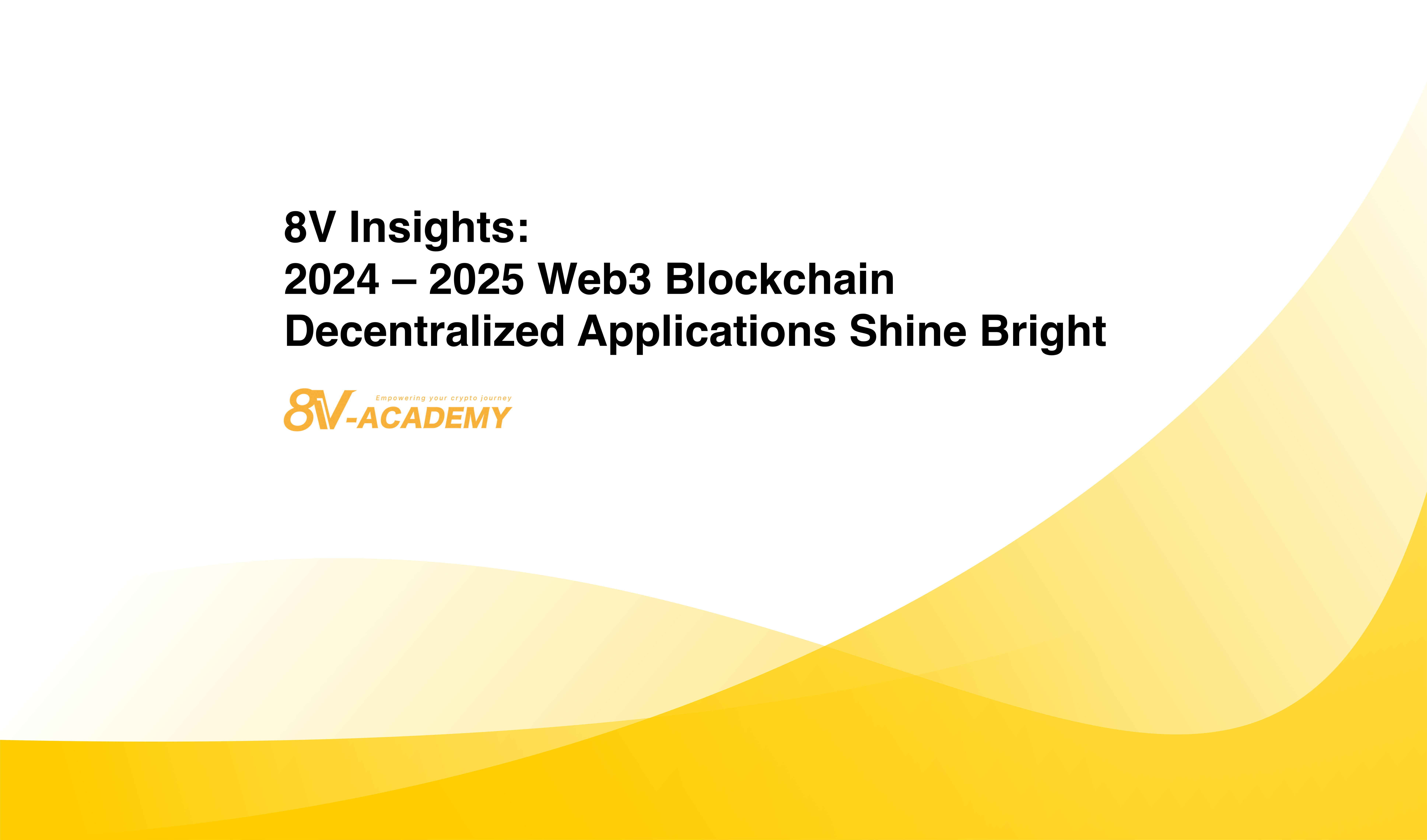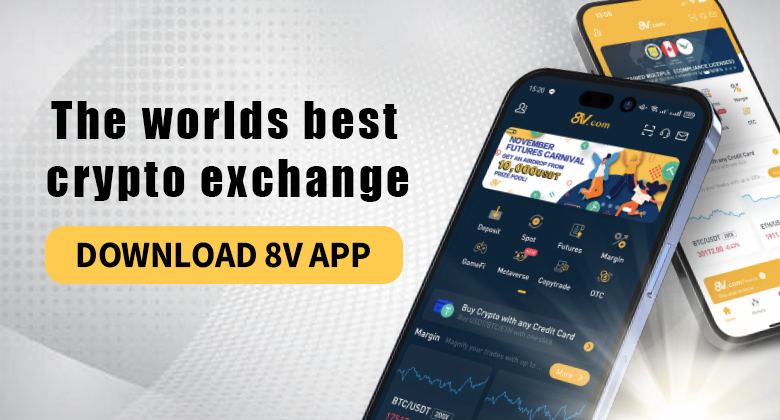Identifying Some Highly Promising Layer1 and Layer2 Blockchains Amidst the Web3 Craze

Web 3.0 (Web3) refers to the third generation of the internet supported by Distributed Ledger Technology (DLT), with its infrastructure built on blockchain technology, forming a decentralized network world and serving as the foundation for the metaverse. In the environment of Web 3.0, ownership and control are decentralized, where both creators and users can hold tokens like NFTs to enjoy specific network services. Whether Web 3.0 will become mainstream in the future remains uncertain. However, driven by the global blockchain technology boom, Web 3.0 is no longer just theoretical or trendy jargon but is evolving into a technological revolution reshaping the internet world.
Below, 8V.com has selected several highly promising public chains and L2 chains under the trend of Web3 from a technical analysis perspective.
The Hot Web3 Blockchain with MOVE Language Programming: SUI
SUI ($1.68) adopts a unique dual consensus model, dividing transactions into dependent and independent categories. In dependent transactions, SUI utilizes the Narwhal and Bullshark protocols for processing, effectively combining the two to ensure transactions are executed sequentially. Narwhal is a flexible memory pool protocol, while Bullshark is an efficient consensus protocol. The collaboration between the two enables SUI to achieve consensus rapidly.
For dependent transactions, SUI organizes them into batches and executes each batch simultaneously, thus enhancing overall processing efficiency. Initially, SUI planned to use Narwhal and Tusk, but later opted to replace Tusk with Bullshark. Despite Bullshark having slightly lower throughput, its speed is faster, making SUI’s system more robust. Under this design, the speed of Narwhal + Bullshark is exceptionally fast (around 2 seconds), providing users with a superior transaction experience.
On the other hand, for independent transactions, SUI employs the Byzantine Consensus Broadcast (BCB) method. This approach enables transactions to be processed almost immediately without waiting for global consensus. Consequently, SUI can handle users’ transaction demands more swiftly while ensuring system security and stability.
It’s important to note that SUI blockchain stores data based on objects rather than accounts. Each object has an independent “owner” attribute, specifying which users can interact with it. This architecture brings greater flexibility and scalability to SUI’s system, enabling support for various types of application scenarios.
SUI’s DeFi ecosystem includes liquidity re-pledging NAVI, lending Scallop, decentralized exchange Cetus, DeFi contract trading protocol BlueFin, wallet-as-a-service infrastructure Stardust, among others. The emergence of these application scenarios enriches SUI’s ecosystem, providing users with diversified financial services and trading opportunities.
Trade SUI/USDT at 8V.com
Layer 1 Blockchain: Open Network (TON)
Open Network (TON) ($5.90) is a fully decentralized first-layer blockchain designed by Telegram, featuring scalability and sharding capabilities to enable fast, low-cost, and energy-efficient blockchain transactions. Despite Telegram abandoning the TON project, it was later taken over by a developer community named newTON (renamed TON Foundation in May 2021), who continued its development and rebranded it as The Open Network, while also renaming the original $GRAM to TON. Today, Telegram users can conduct cryptocurrency transactions within the app without leaving it. According to statistics from the TON official website, the entire ecosystem currently comprises 602 applications categorized into 19 categories, including centralized exchanges, decentralized exchanges, staking, wallets, browsers, bridges, utilities, channels, NFT collections, chat, social, gambling, gaming, Jettons, NFT services, VPN, development tools, shopping, and launchpads. The on-chain data of TON verifies the current growth trend. According to DeFiLlama data, after the surge in TON prices, the total locked value on the TON chain reached a new high, approximately 13.86 million TON, with a peak value of around $56 million. At the same time, according to Token Terminal data, both weekly and monthly active users of TON have reached new highs, with weekly active users exceeding 490,000 and monthly active users exceeding 730,000.
Trade TON/USDT at 8V.com
Multichain Structured Blockchain:Avalanche (AVAX)
Avalanche (AVAX) ($50.05), launched in 2020, is a novel blockchain characterized by its innovative consensus mechanism called the “Avalanche protocol,” hence the name Avalanche chain. Unlike most existing public chains, the Avalanche chain consists of three parallel chains, each with its unique tasks, collaborating to create a platform that is fast and convenient for DeFi projects to deploy smart contracts.
From the outset, Avalanche adopts a multi-chain structure, where each chain has its designated responsibilities, working together to achieve higher operational efficiency. Recently, on the test network, the transaction throughput of the Avalanche chain has reached 145,000 transactions per second. Moreover, the network itself boasts strong scalability, allowing for the continuous creation of subnets under this architecture. Subnets are application blockchains within the Avalanche ecosystem, aiming to provide each DApp with a custom chain. Currently, collaborations with renowned enterprises such as Alibaba Cloud and Amazon have been initiated, making Avalanche not just a public chain but also a builder of a multi-chain network.
The DeFi ecosystem on Avalanche includes decentralized exchanges like Trader Joe, token financing platforms like Rocket Joe, NFT trading markets like Joepegs, decentralized derivatives trading like GMX, DeFi automation platforms like Cian, real-world-linked NFT markets like KALAO, lending platforms like BENQI, innovative DeFi protocols like Platypus Finance, IDO fundraising platforms like Avalaunch, and blockchain games like Gameplay.
Trade AVAX/USDT at 8V.com
Popular L2 zk-rollup chain: Starknet (STRK)
Starknet ($2.02) is a popular L2 zk-rollup project running on the Ethereum network. Rollups handle most transactions outside of Ethereum and provide proof of these transactions to Ethereum to alleviate the burden on the first-layer blockchain, enabling faster and cheaper transactions.
As an L2 solution, Starknet processes transactions on its network and settles them on Ethereum to enhance scalability. It achieves this by compressing thousands of transactions into data structures called “proofs” and then submitting them as transactions to Ethereum. This significantly increases throughput, i.e., the number of transactions processed per second, and significantly reduces the cost of each transaction.
StarkNet leverages a proprietary proof system called zk-STARK or zero-knowledge scalable transparent knowledge proof. This system verifies the correctness of transactions without disclosing sensitive information, thereby enhancing privacy and security. Starknet has two core components: sequencers and verifiers. Sequencers are responsible for executing transactions and proposing blocks, processing more transactions per second than Ethereum nodes. On the other hand, verifiers provide mathematical assurances of the validity of block transactions, which are eventually settled on Ethereum.
The DeFi ecosystem on Starknet includes the Morphine DeFi lending protocol, composable AMM JediSwap, decentralized cross-rollup bridge Orbiter Finance, decentralized exchange DeversiFi, NFT and blockchain game Realms, NFT marketing RYG.Labs, and blockchain game The Ninth.





